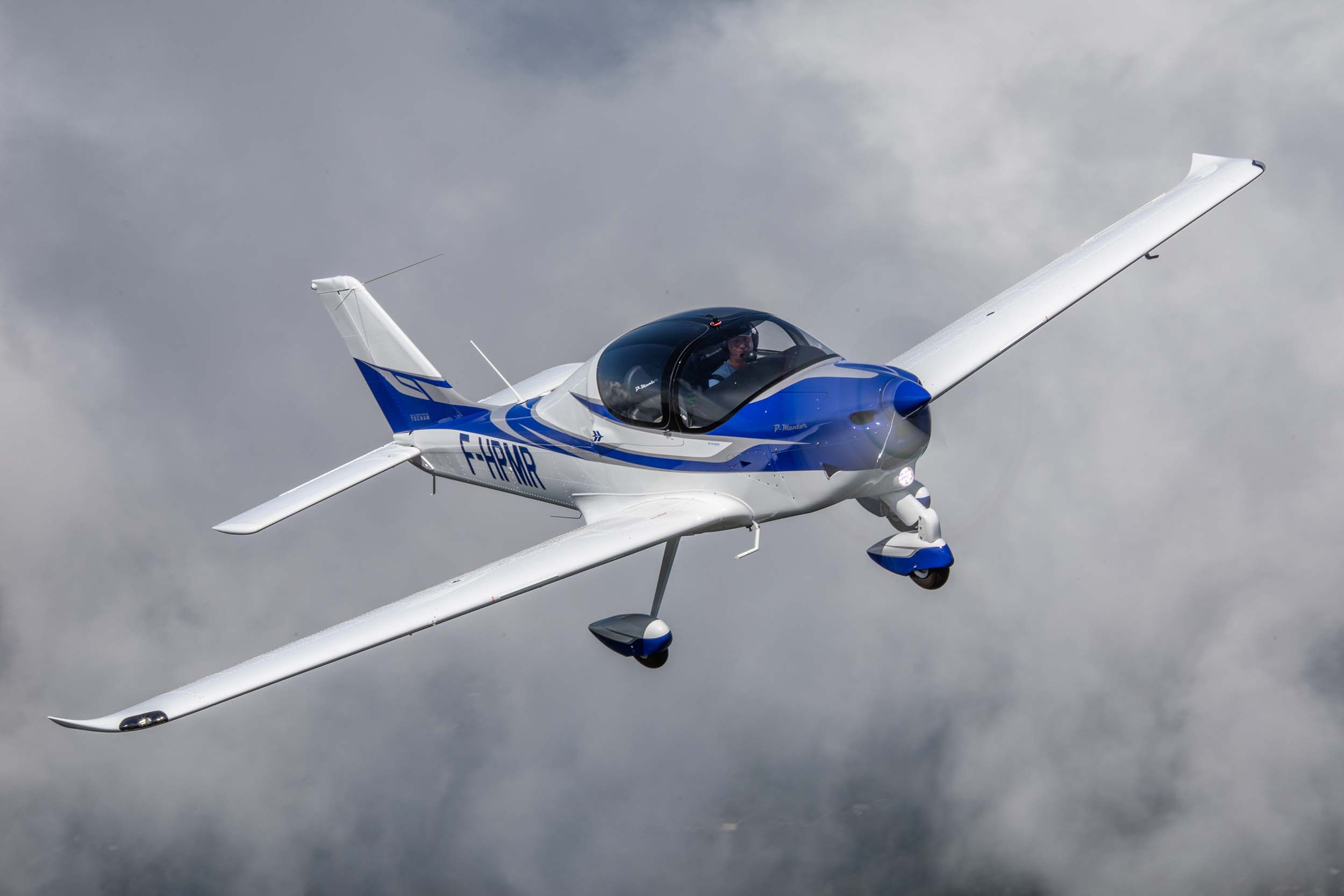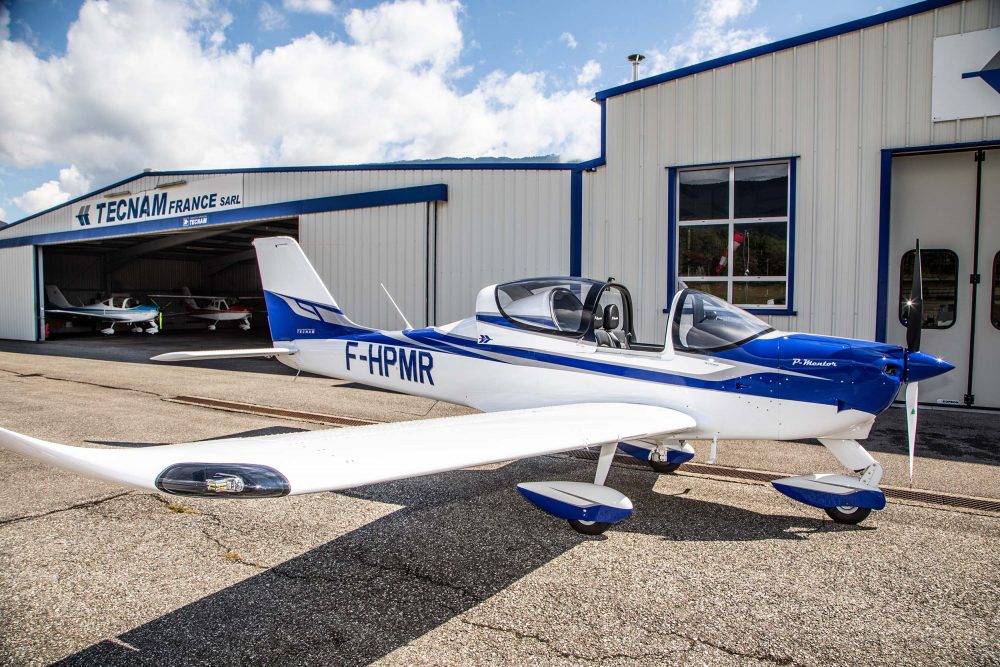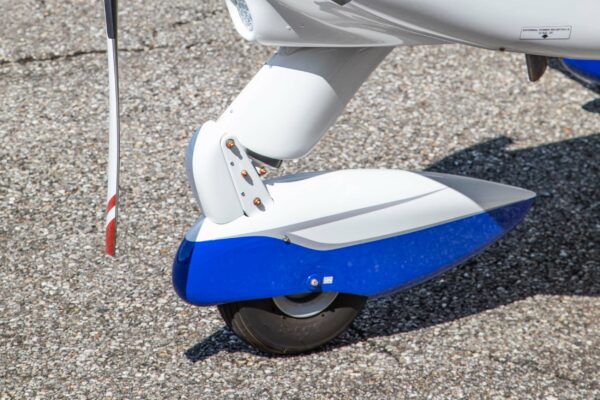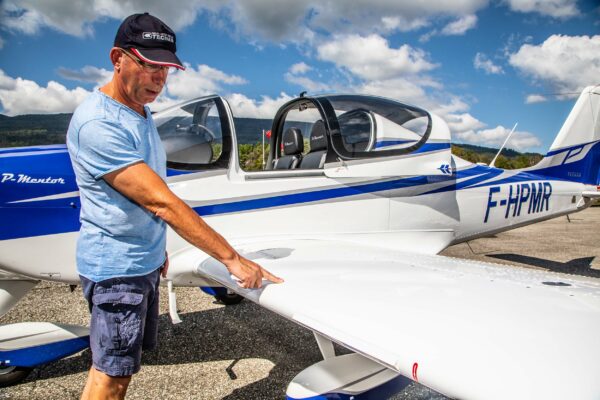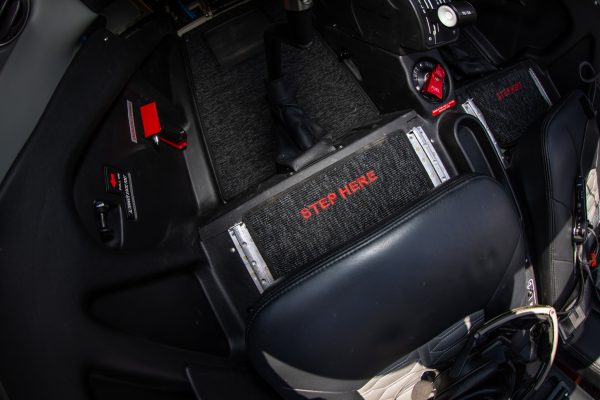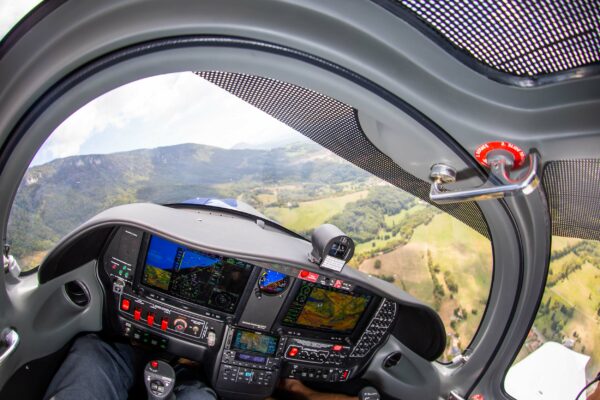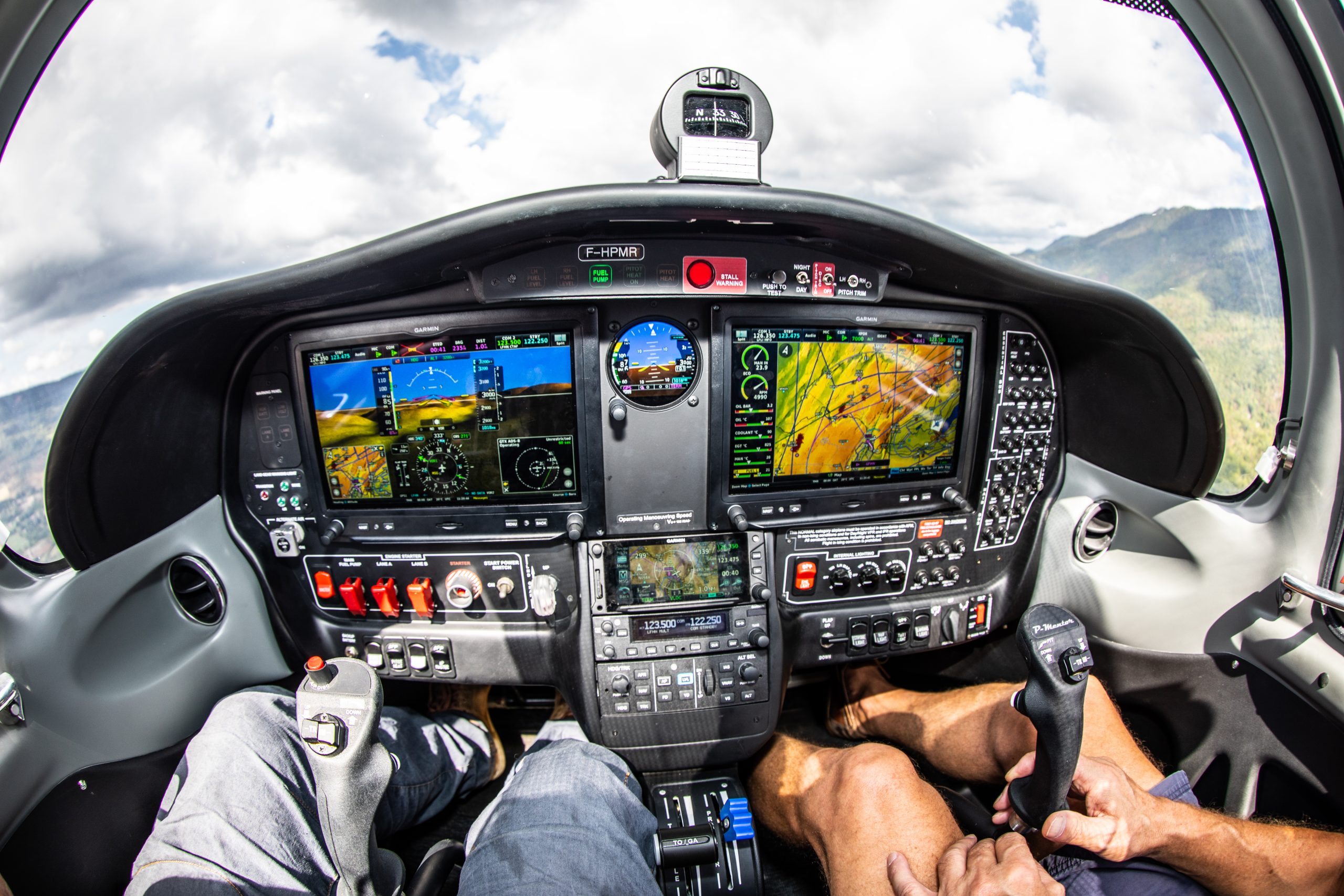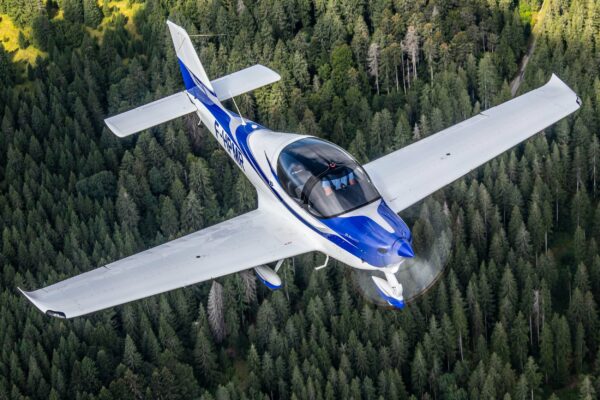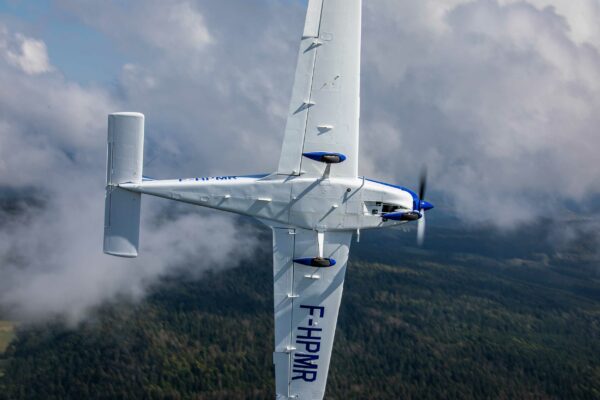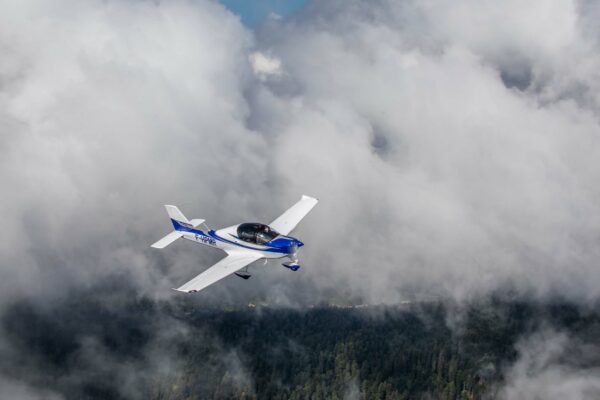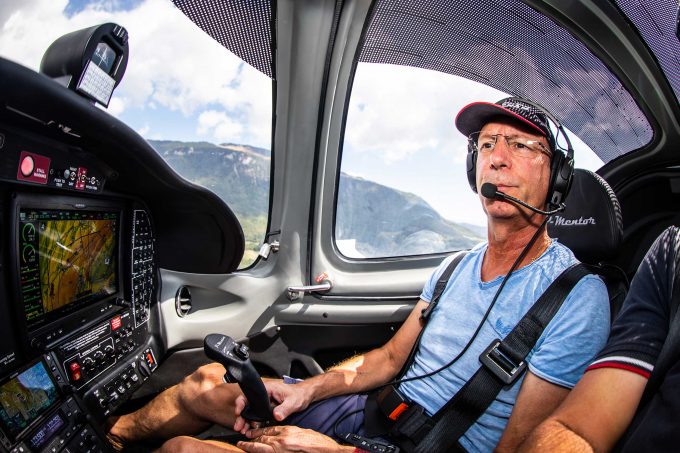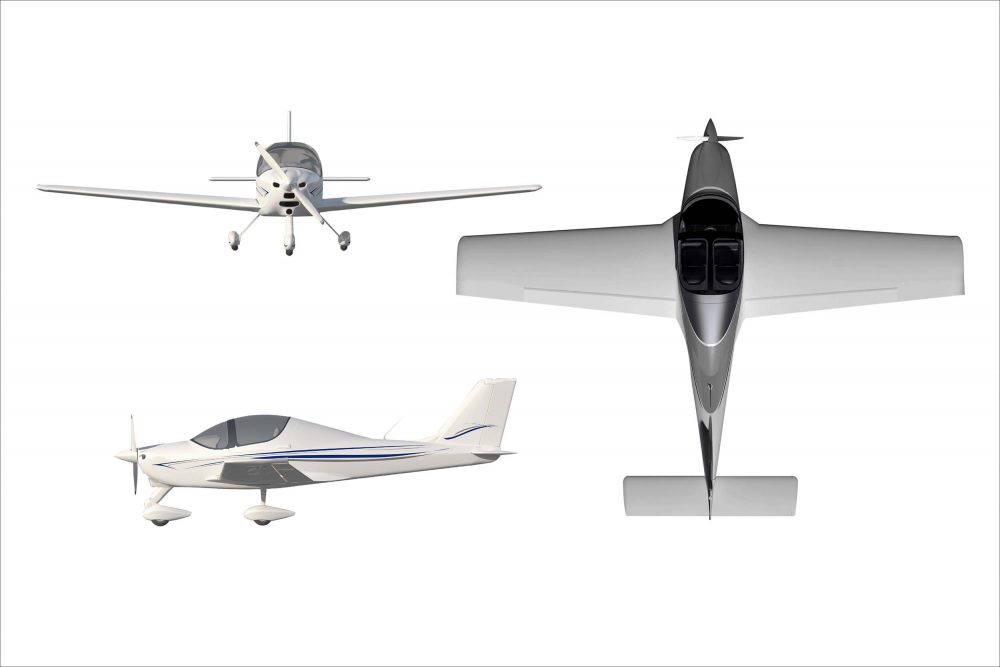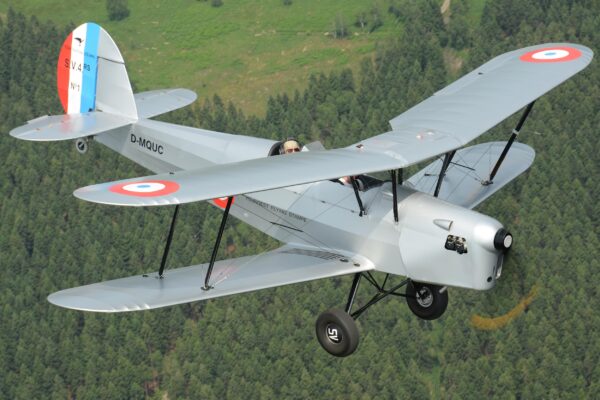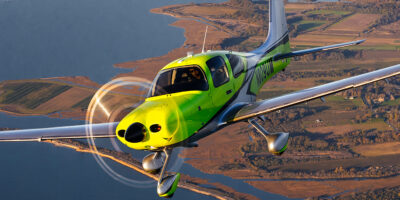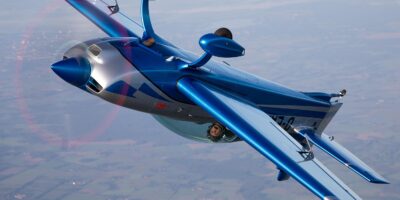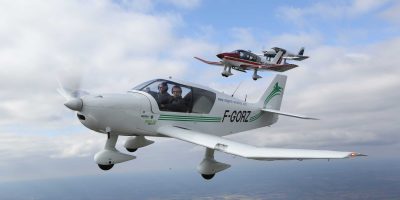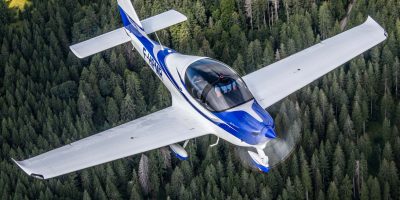In flight
The take-off briefing with flight school operator, Franck, includes setting one notch of flaps, rotation at 53kt and a climb to Vy with flaps down at 65kt. We are close to the P-Mentor’s maximum weight at 720kg. In the IFR version, RNAV is equipped with all options (except for the airframe parachute) and at an empty weight of 465kg, that is 150kg of load available if we had the 140 litres of full tanks. Of course, instructors will find a good compromise between range and available load.
The P-Mentor is easy to handle. You quickly get the feeling that you are flying an aeroplane and not a microlight. This is partly due to the smaller ailerons on the P-Mentor, which make the aircraft less fiery and provide a more stable platform for learning. The controls are pleasant on all axes.
On the performance side, the P-Mentor is modest: a 500ft/min climb at 65kt and 540ft/min at 70kt. On hot days on a grassy field and at altitude, one should be wary. Fortunately, the variable pitch optimises these flight phases.
You might dream of a 141hp Rotax 915 in this airframe. But for training purposes, you can’t have an economical aircraft without paying a small price for performance. Anyway, the aircraft fulfils its mission without any problem. In cruise, we note a True Air Speed (TAS) averaged over three legs at around 103kt. Sufficient for flight training but a bit slow for touring. Once again, a Rotax 915 would be a plus on this airframe.
Stall tests reveal a healthy and safe aircraft, but not very demonstrative when there are no flaps or first stage. It is necessary to extend the second notch of flap and wait for 45kt, to obtain a slightly more decisive behaviour. The P-Mentor is protective.


